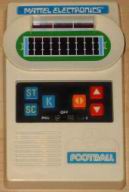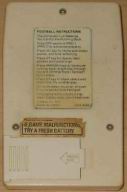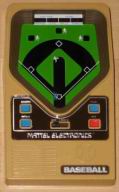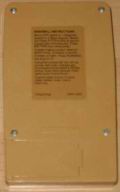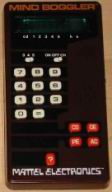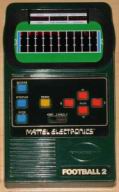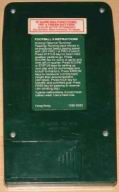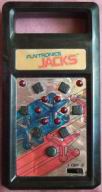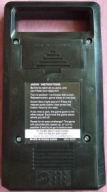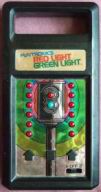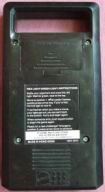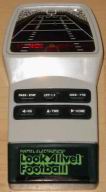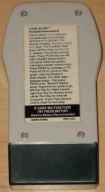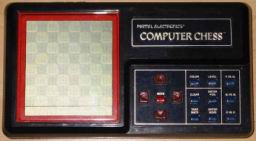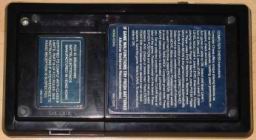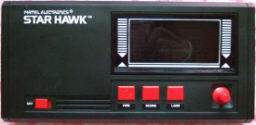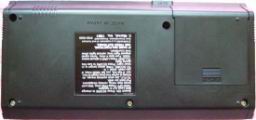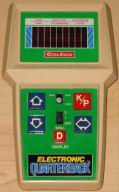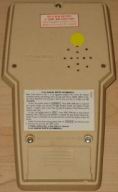- Mattel Handhelds Intro -
While Atari was ready to enter the video market with the 2600, Mattel
hesitated. To test the electronic game market, Mattel
decided to release handheld games instead of video games. With the success of the Atari
2600, Mattel moved into the video game market with the Intellivision
in late 1979. The handhelds continued on through 1982.
The first game released was Auto Racing in 1976. Even though Ski
Slalom uses the same case design, it was not released until 1980. In
Auto Racing, you navigate your car up the screen dodging cars coming
down the screen. You have to loop the screen 4 times to complete the
game. Ski Slalom works in the opposite direction so that you
navigate your man down the screen as obstacles go up the screen.
--- 1977 ---
Mattel hit it big in 1977 with the release of Football. Run your man
from the side to side of the screen dodging the opponent. When
you get to the end, you loop back to where you started the play. Each button press to
the side moves your man one yard.
With great success came great failure. Releasing in 1977 also,
Missile Attack saw a short life span as it was controversial. A city
being bombed? The design lived on with Space Alert in 1978. Your
city/battle star is being attacked from the top of the screen. Defend
your self by shooting upwards at them. Navigate your shot as it
moves upward.
--- 1978 ---
Mattel opened up the flood gates in 1978 with the most releases in
one year. Keeping cost down is always a priority. This was well
executed with Basketball, Hockey, Soccer, and even to an extent with
Armor Battle and Sub Chase.
It becomes obvious with these releases that Mattel was trying to
cater to the different sports fan. Game play is similar on all these
titles. Move your man around the screen and get into position for a
shot to score a point. Mattel must have realized that they needed a
slight change in one of these games; Hockey was it. The square
playing field was released to the Canadian market. The U.S. market
received a smaller screen where you can not navigate your man behind the
net but the puck can be hit around the net.
Baseball follows Football as being the only other title not to share
it's design with other releases. It is also the last Mattel
Electronics title that requires sound to play. It is impossible to know how many bases you
can run without hearing the beeps. This is also the only title to
have high speed movement. Trying to hit a pitch is not the easiest
task.
Mind Boggler had a quiet release and is not documented in any of the
Mattel dealer catalogs. This title moves away from requiring sound by
not even having a speaker! The objective is to guess a secret code
number randomly generated. After guessing numbers, the game gives
you hints if you are close or not. Set the game to use 3,4, or 5
digits.
Mattel attempted to capitalize on the success with Football by
releasing an update. This version adds a 4th row to the screen,
allows the passing of the ball and running backwards. Mattel created
one of the best handhelds with this release and is a must own for
any Football fan.
--- 1979 ---
With all the sports games already made, 79' was appropriate for
Mattel to continue making "2" models. Basketball got a 3 point line, penalties, free
shots, defensive strategy options, and passing. Soccer got play
similar to Football where you cross the field by looping through
screens, passing, low/high kicks, stealing, throw-in, corner kicks,
and control of your teammate. One flaw in these models was the LCD
lights are thinner and dimmer. It is hard to see the playing field
in any light.
Mattel released handhelds under a new division
called Funtronics. This was probably done due to the simple game
play and the different market, age group of 5 and up, the games were
being marketed to. All the Mattel Electronics games were marketed to
the age group of 8 to 80. Jacks requires you to throw
the ball up and pick up the correct amount of jacks by pressing the
button next to the lit LED. Red Light Green Light requires you to
move up your row when the center light turns green.
LED Football, LED Football 2, and LED Basketball is now on the iPhone/iTouch.
Visit Touchgrove's WEBSITE or the iTunes store for more info.
--- 1976 ---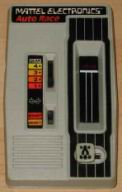
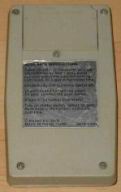
Auto Racing (1976)
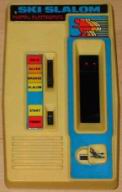
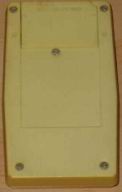
Ski Slalom (1980)
Battlestar Galactica is the only LED handheld to use a licensed name. It is
interesting how all the Intellivision sports titles used licensed
names but Intellivision Space Battle did not.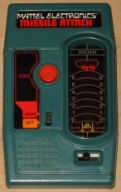
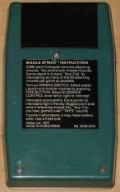
Missile Attack (1977)
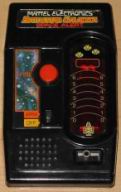
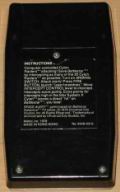
Space Alert (1978)
In Armor Battle and Sub Chase, navigate around the screen looking for the enemy using an audible
alarm as you get closer. Score points when you hit them. These are
the first games to require sound to play the game.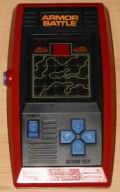
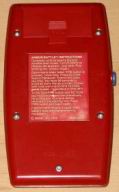
Armor Battle (1978)
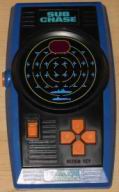
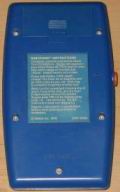
Sub Chase (1978)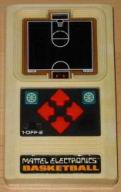
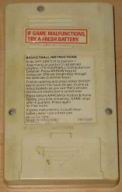
Basketball (1978)
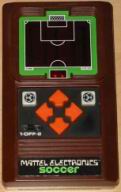

Soccer (1978)
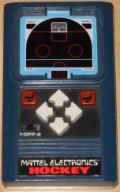
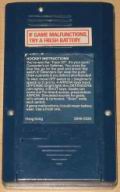
U.S.Hockey (1978)
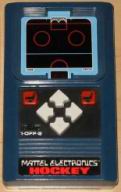
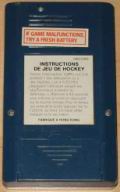
Canadian Hockey (1978)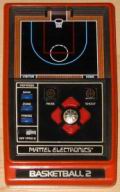
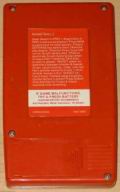
Basketball 2 (1979)
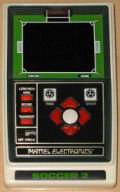
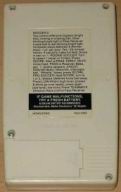
Soccer 2 (1979)
By 1980, the handheld market began a slow down. With the Intellivision and Atari in full swing, the video game market took off. This did not stop Mattel from creating a new model. Bowling or Skiing anyone? Bowling is the only handheld that is mechanical and electronic. As the ball is "rolling" down the lane, you can control it by twisting the unit left and right.
Mattel did not give up easily and attempted to use Football to keep the handhelds alive with a new series called "Look Alive". Instead of running around the screen, the perspective is changed to run down the field. This is done by the opponents moving down the screen and your man stays fixed at the bottom center. It is a shame that this game was released at the end of the LED life cycle as it is one of the best games. Very rare but a must have.
Mattel did not wait to jump on the LCD bad wagon. In 1980, they released Chess. The packaging definitely reflects the period. Use the cursors to select and move your piece. You can play 2 player, 1 player, or watch the computer play itself.
--- 1981 ---
Star Hawk has a 1981 date but was shown in the 1982 catalog. It is the
only game with multi-colored LEDs. It is advertised to have three colors
but actually has two. The third color is created with a green filter.
Use the joystick to maneuver your craft and hunt down enemy craft. Watch
out for flack! Get them in your sight and fire the twin laser beams. Hear
the enemy explode, your laser beam, diving, and climbing.
--- 1982 ---
The LCD games followed the Intellivision games with licensed titles such as
AD&D, Burgertime, and Masters of the Universe. The Mattel handhelds
died when the Intellivision reached it's peak in popularity.
Game play is very simple. Move in one of 4 directions attempting to
find Skelator. Use warnings to hint the path you should take. AD&D
plays exactly the same game play except you are searching for the dragon.
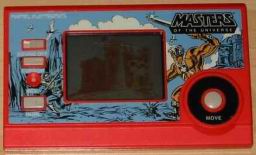
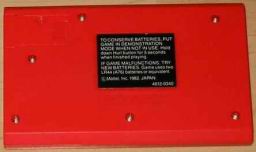
Masters of the Universe (1982)
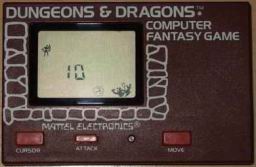
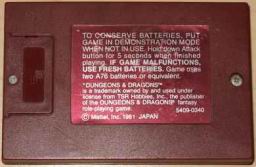
Dungeons & Dragons (1982)
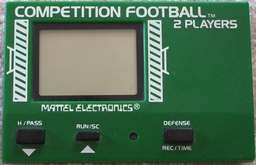
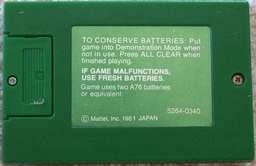
Competition Football (1982)
--- 2000 ---
Just when we thought they were gone for good, the sports titles saw a re-release in 2000. Going after the nostalgia, keychain versions are sold. They play exactly as the originals but use an LCD screen.
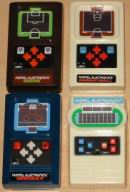
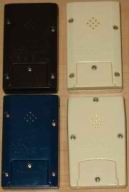
Keychain: Soccer, Basketball, Hockey, Football
This is not a Mattel release but I owned it back in the day. Coleco did compete in the handheld market and Quarterback was ahead of Mattel Football with having a passing option. This created a bug though. On 4th down, start the play by repeatedly pressing the pass button. Squeeze in an UP press and catch the ball. Press the Kick button and the ball will be kicked down field. Quickly press the Display button before the ball goes off the screen. Start pressing the Pass button again repeatedly and the play starts again. You just gained 15 yards. Keep repeating this process and you will make a touchdown.

